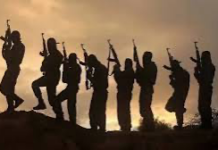Strengthening Our National Infrastructure!!!
Saleh Shehu Ashaka
The recent vandalization of the 330kV Shiroro power towers has unveiled a disturbing new layer to the security challenges facing our nation. This act not only disrupts our power supply but also highlights vulnerabilities that can cripple essential services upon which our society relies.
The response from our government regarding these events has been troubling, especially concerning the implications of the attackers’ capabilities and their threat to national stability.
In a crisis situation, it’s often said that “truth is the first casualty.” This notion appears to hold in our current predicament, as officials suggested that the terrorists could effectively ground the nation, creating panic and uncertainty among citizens and investors alike.
While transparency is crucial, the rhetoric used must be carefully chosen to avoid exacerbating fears. Instead of laying blame on technical issues like faulty turbines or low water levels—factors that can be remedied over time—our focus should be on the immediate security of these critical infrastructures.
Attacking power transmission lines is no ordinary crime; it’s a strategic move that endangers the very lifeblood of our social infrastructure. When such essential services are compromised, the repercussions ripple through healthcare, education, and economic activity, ultimately holding the nation to ransom.
Read Also:
The government must prioritize not just the repairs of these lines but also the implementation of robust protective measures to prevent future attacks.
One effective strategy would be to deploy thermal cameras at the locations of such vital assets. Monitoring these areas continuously for suspicious activity would act as a substantial deterrent against potential vandalism, enabling authorities to respond swiftly to threats before they escalate.
The implementation of such technology is not merely an afterthought; it is a necessary evolution in how we protect critical infrastructure in an age where security challenges are increasingly sophisticated.
Moreover, there is an urgent need to establish an agency dedicated to the protection of critical national infrastructure.
This agency should not only oversee the security of power facilities but also extend its mandate to other essential sectors such as transportation, communication, and healthcare. By centralizing and professionalizing our approach to safeguarding infrastructure, we can create a more resilient framework capable of adapting to emerging threats.
In conclusion, while the vandalism of the Shiroro power towers has exposed significant vulnerabilities in our national infrastructure, it also presents an opportunity for a proactive reevaluation of how we protect and manage these assets. By investing in surveillance technology and creating dedicated agencies for infrastructure protection, we can better shield our nation from such crises in the future. The time to act is now—not only to repair what has been broken but to fortify our foundations for a more secure and stable future.
















